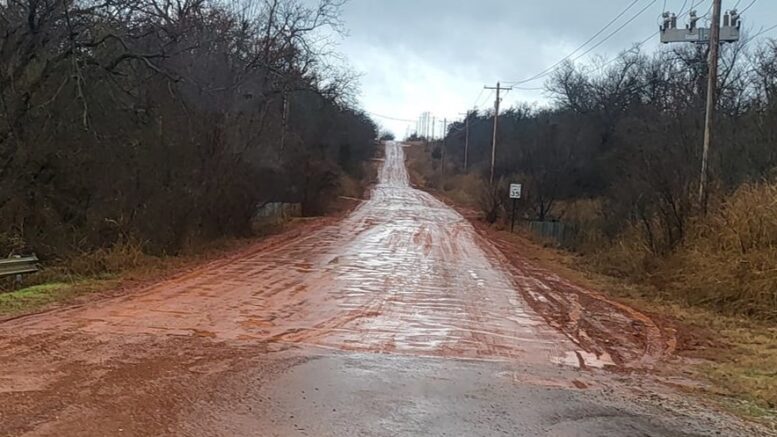Roads throughout Logan County have been a much-discussed topic over the years, especially lately with social media and television reports. Last week, a discussion was held at the Board of County Commissioners (BOCC) meeting to learn about Tax Increment Financing (TIF) Districts and whether that’s the answer to building county roads in specific areas.
A TIF, enacted by the State of Oklahoma in 1992, is a public tool that reallocates newly generated tax dollars for up to 25 years for supporting development or redevelopment in certain limited areas of a city, town, or county. The TIF is used to help generate private development projects, through the funding by tax dollars, for public improvements and other eligible project costs.
District 1 Commissioner Mark Sharpton said that the pressure on the county commissioners to build and pave roads is only growing as the county grows.
District 2 Commissioner Charlie Meadows requested the discussion which was led by Jeff Sabin with the Center of Economic Development Law based in Oklahoma City.
Before the start of the meeting, Meadows passed out maps to those in the audience to show three areas that would be considered for a TIF District with two of the three in his district.
The first includes portions from Simmons Road to Charter Oak Road between Westminister Road and Anderson Road. The second area highlighted was north of Highway 105 two miles to County Road 76 with portions between Douglas Blvd. and Westminister Road.
A third area highlighted is in District 1, which is one mile north and south of Forest Hills Road between Portland Ave. (SH-74) and Pennsylvania Ave.
The three areas combined are approximately 20 miles of total roadway.
Meadows said that according to Randy Robinson, the Executive Director at Oklahoma Cooperative Circuit Engineering Districts, a TIF has not been used exclusively for roads in Oklahoma.
When asked by a citizen about the area qualifying for a TIF due to the housing construction, the attorney said that an analysis would have to be done to determine if the project area qualifies as a TIF District under the law.
District 3 Commissioner Monty Piearcy asked if the project costs had been determined, which Meadows said the project cost had not been determined.
Meadows says that the cost of the roads can be between $500,000 and $800,000 per mile and would like to combine the use of bond indebtedness and pay-as-you-go so that work could begin quickly.
Sharpton added he favors a pay-as-you-go plan for a shorter period of time and asked Sabin if the plan could be amended if the revenue was not obtained. Sabin said the plan could be changed but must go through the review committee.
The three road areas of interest shown by Meadows and Sharpton would be surrounded by new homes that are currently being constructed with the intent of building more.
Sharpton said that the new homeowners would in effect be paying for the new roads. Sabin added to the point that if the development were going to happen without the road, the funds being diverted from the taxing entities would pay for the roads. There needs to be a very clear, logical argument that the project would not have happened to the scale without the TIF
Meadows said he has two concerns regarding TIFs, including not being longer than seven years and a TIF should never be used to benefit any private property. He added by saying TIFs should only be used for public use, roads are beneficial for all, and that each mile of paved road results in less time and equipment for maintenance.
If a TIF district was approved by BOCC, any additional increase in property value would go to pay off the TIF instead of going towards Logan County government, Logan County Health Department, EMS, the public school in those areas (Guthrie, Cashion, and Edmond), and Meridian Technology Center.
Sabin noted that a fire district is considered a special assessment and is not a taxing entity.
The taxing entities have the right to challenge the base assessed value. Sabin said the county assessor would then have time to re-evaluate the base value.
Sabin added that the TIF does not create new taxes.
Before any vote of approval or disapproval by the BOCC, a project plan would be detailed by a review committee. The committee would be made up of the petitioning commissioner and each tax entity (EMS, career tech, public school, and health department) along with three at-large members.
Sabin noted that the review committee makes a recommendation to the BOCC but that the commissioners are not bound to the committee’s final decision. However, if the BOCC does not follow the recommendation they must thoroughly explain why the recommendation was not followed.
Along with the review committee, two public hearings must be held before a decision by the BOCC.





Be the first to comment on "BOCC discusses proposed TIF districts to fund selected county roads"